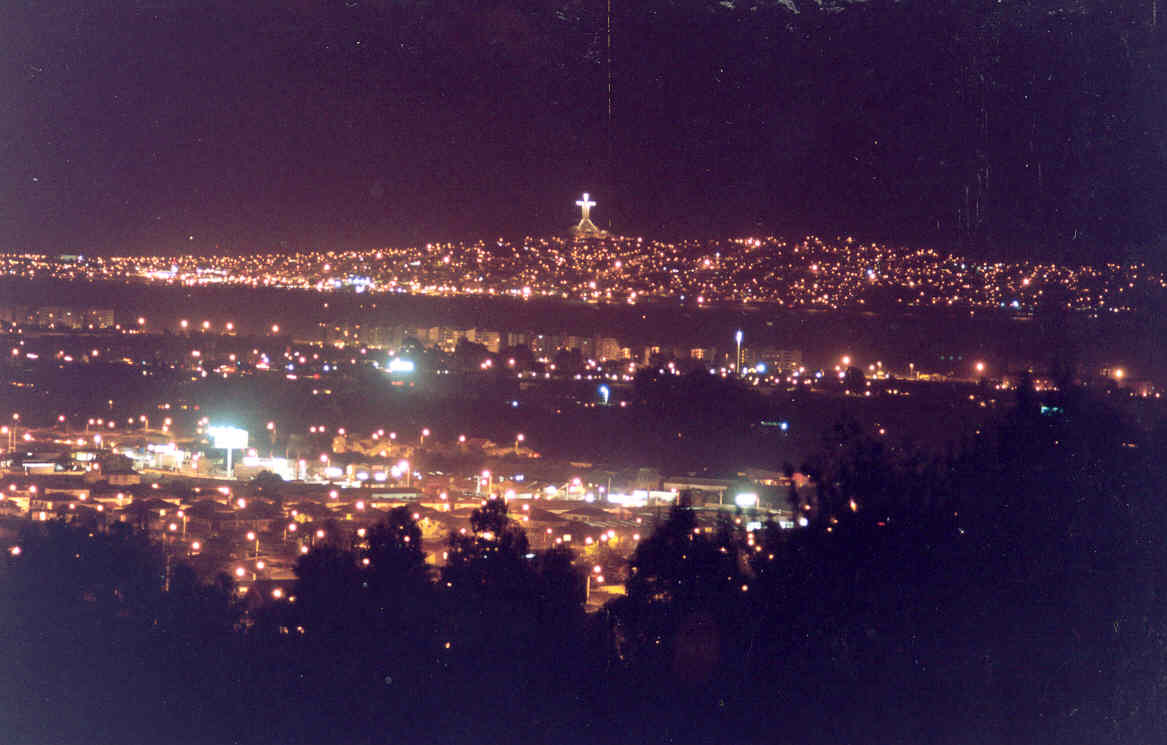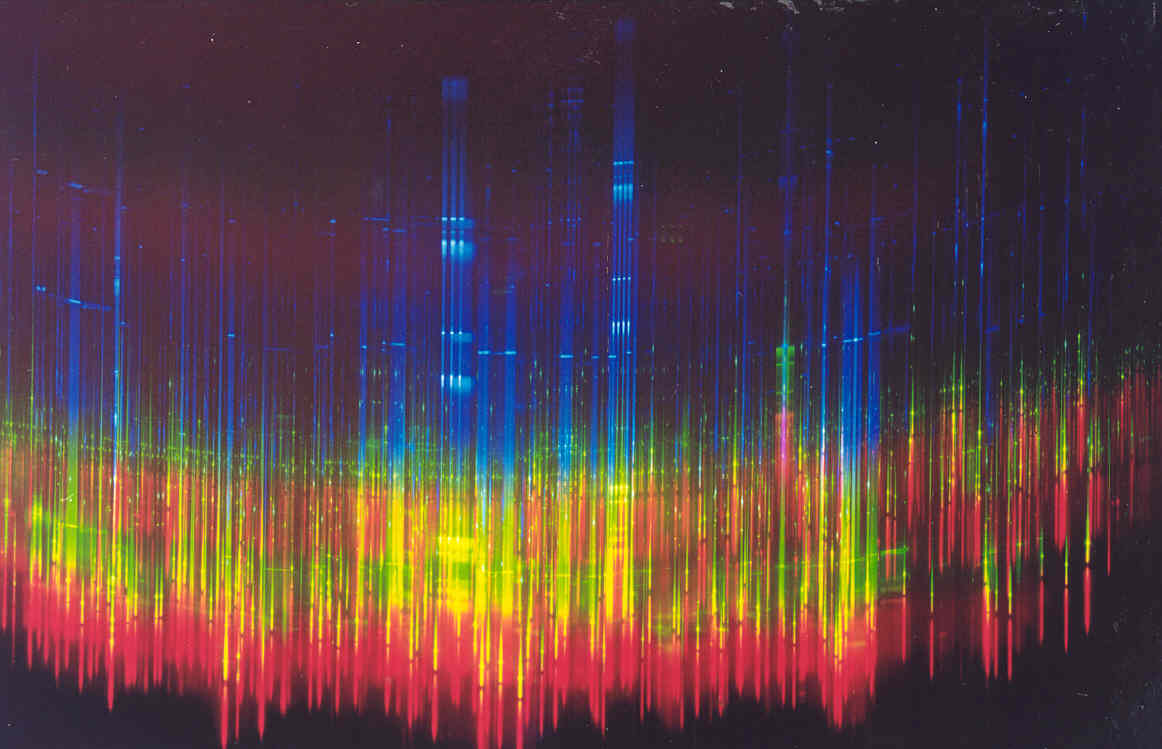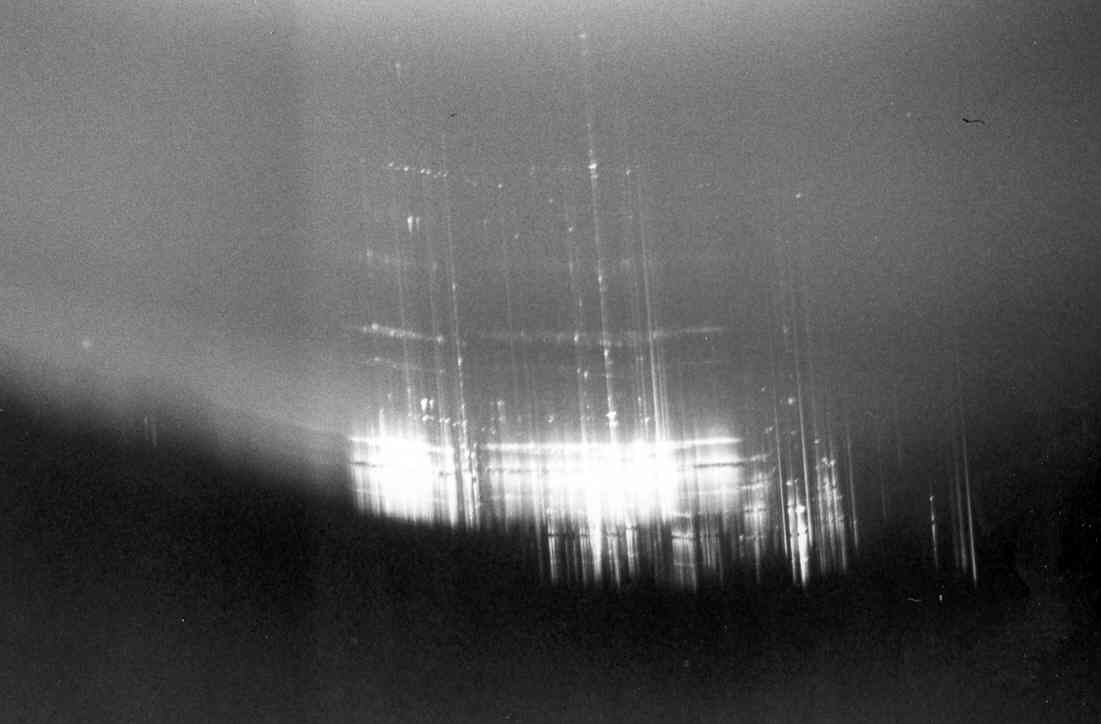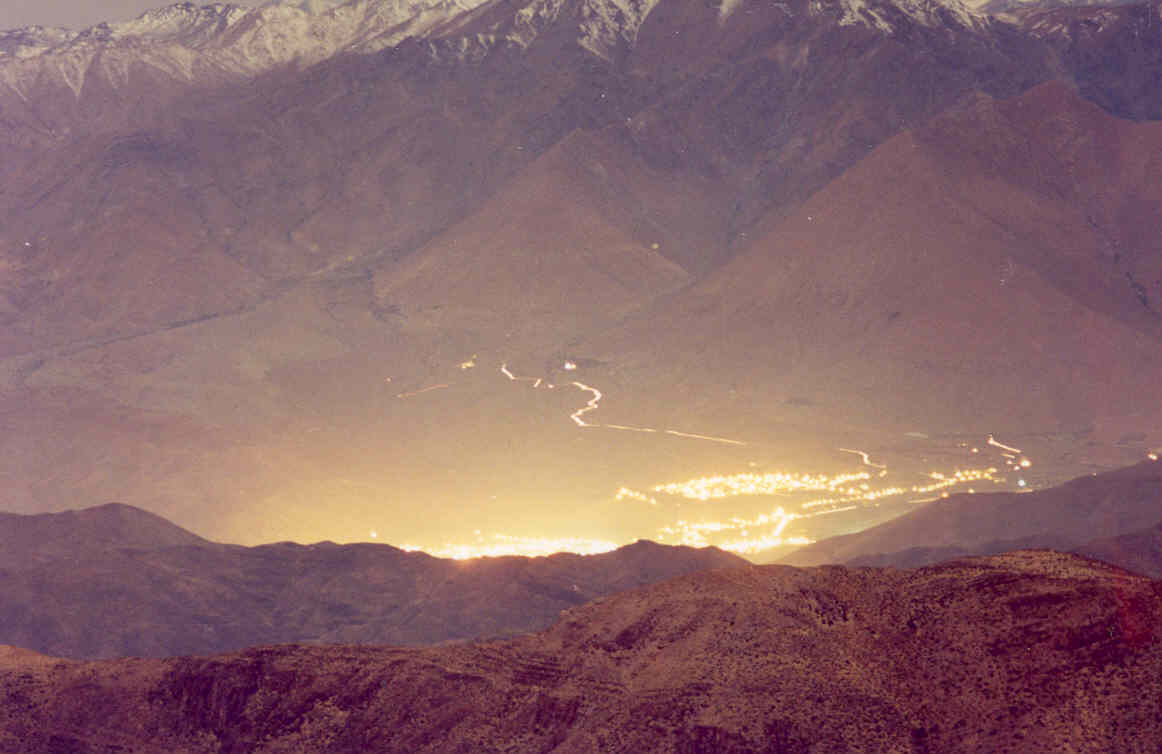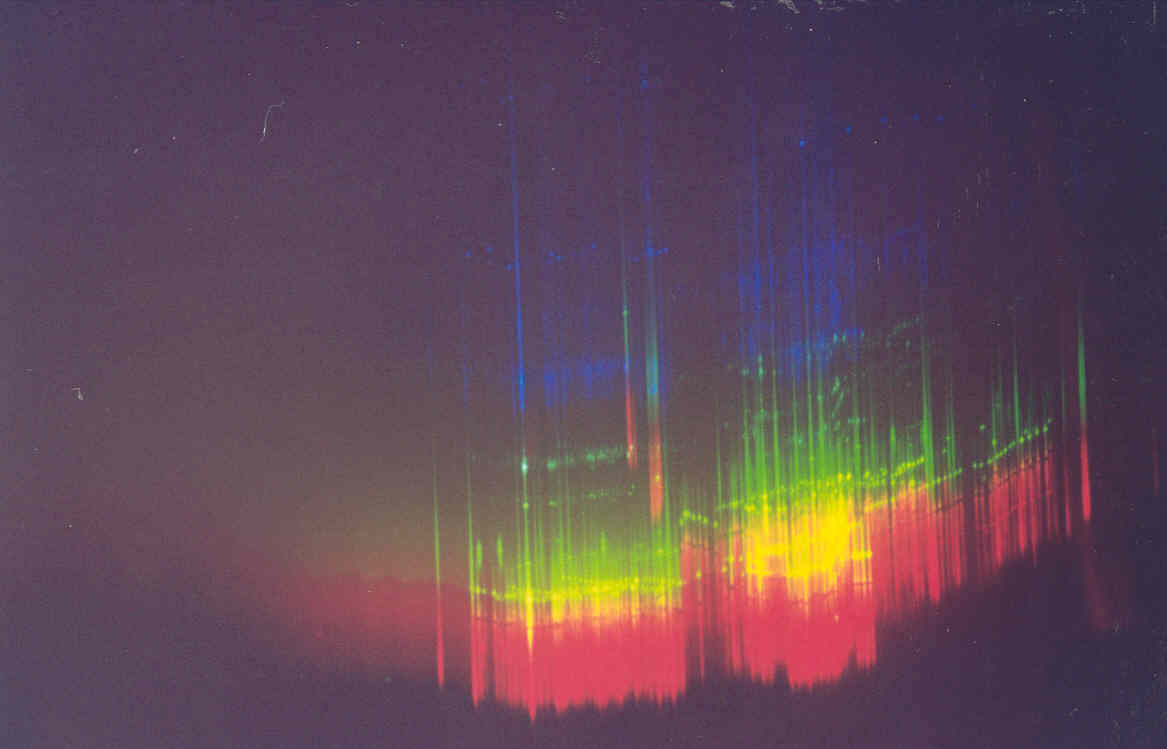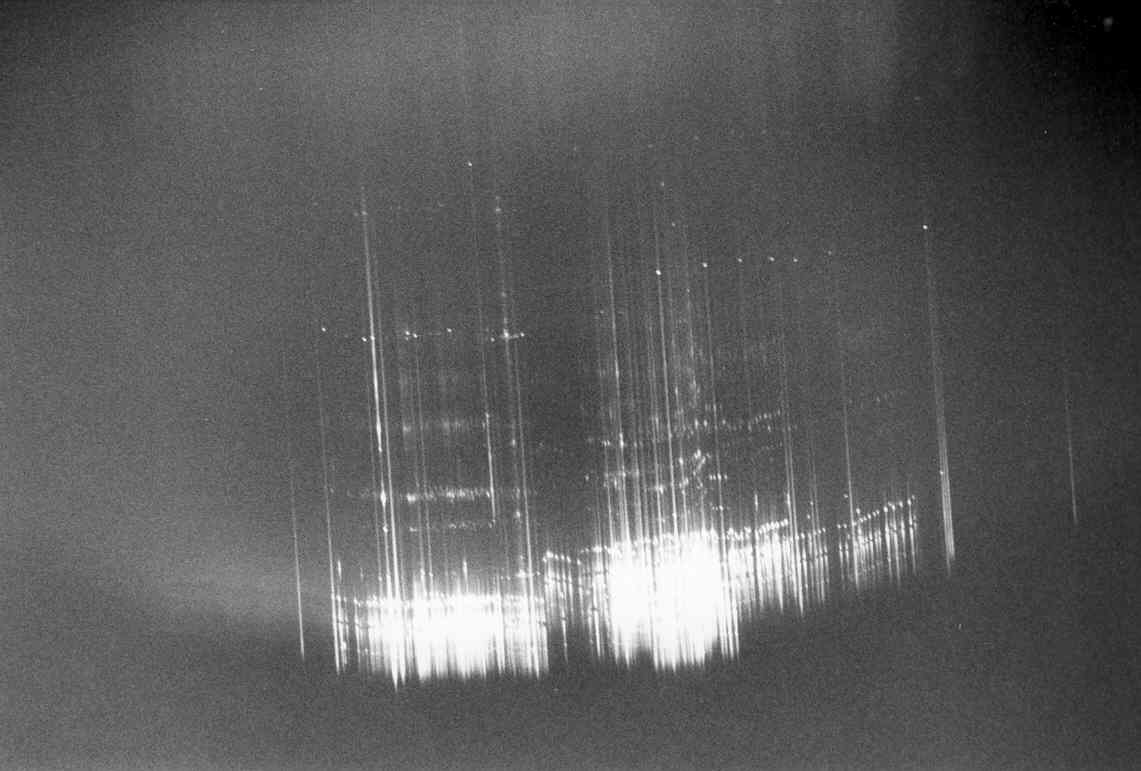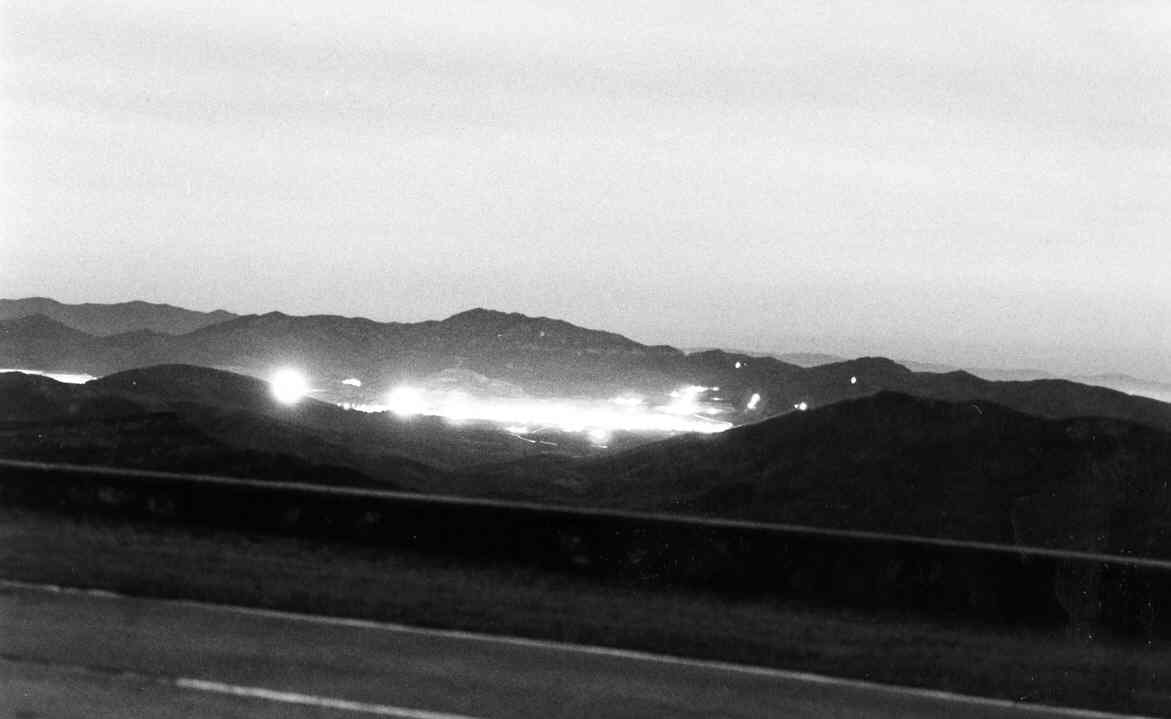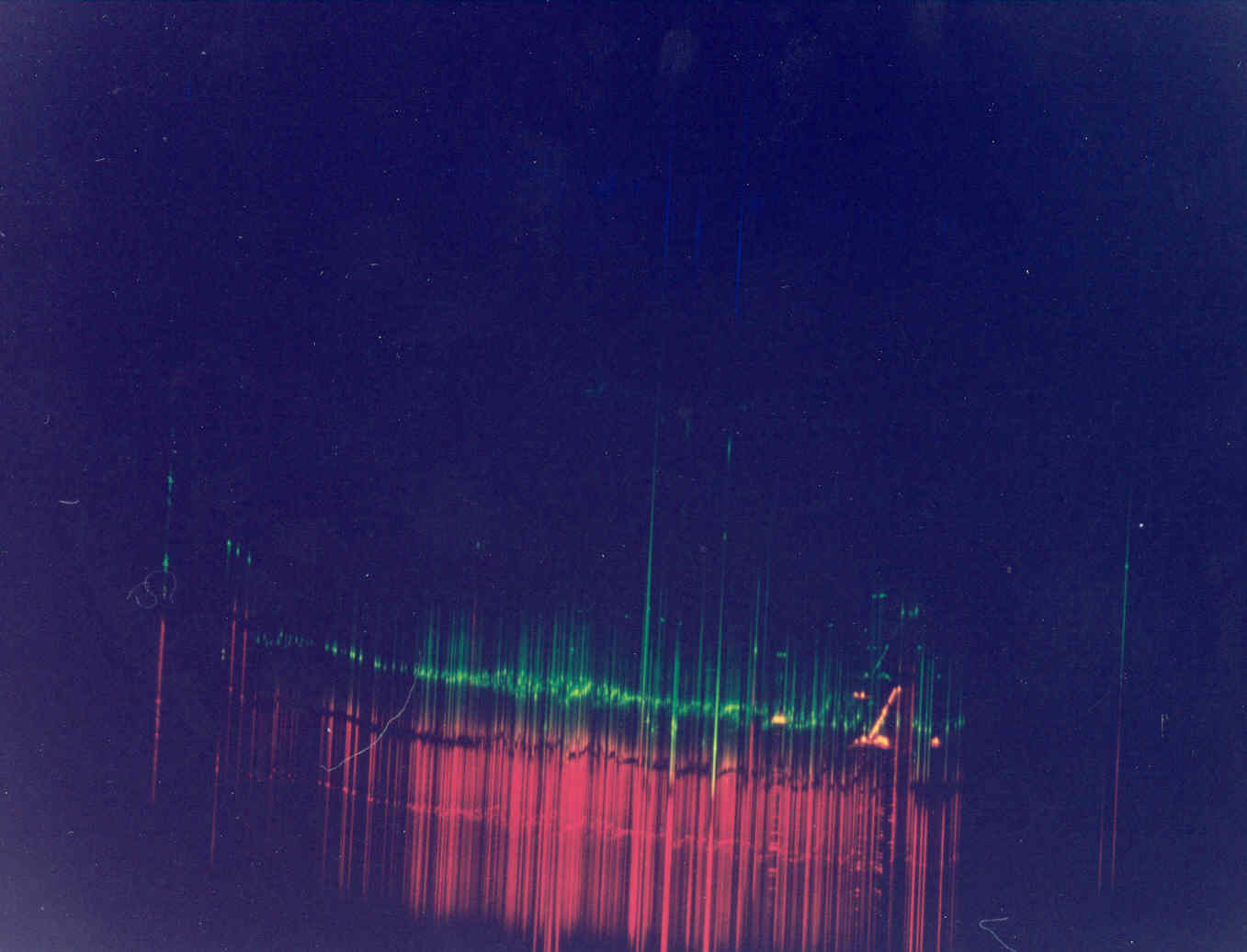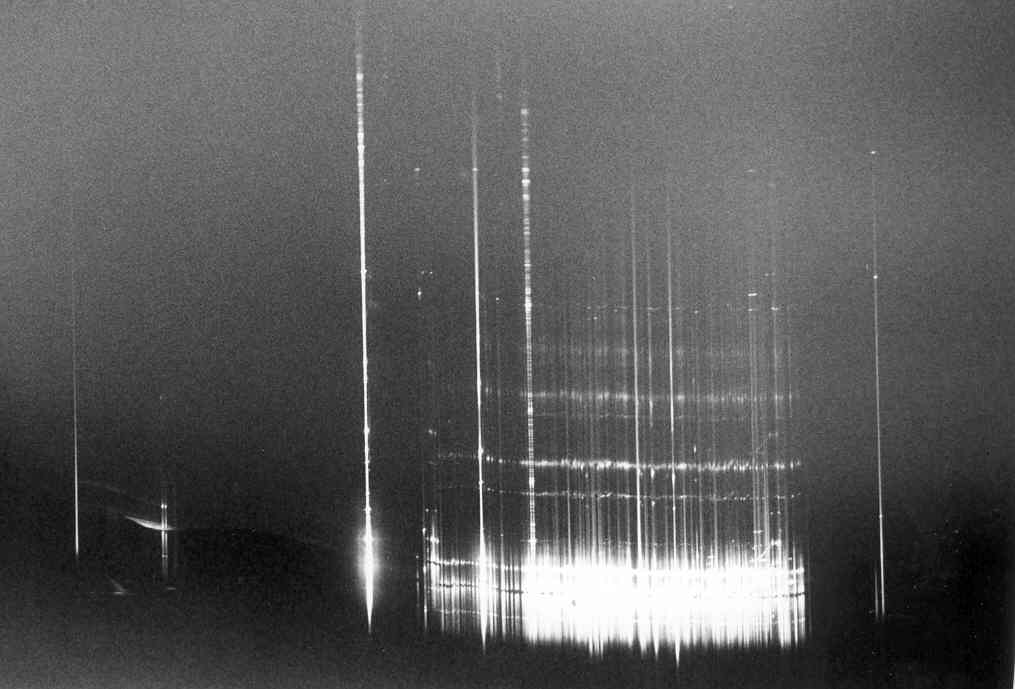Lights around the Observatory
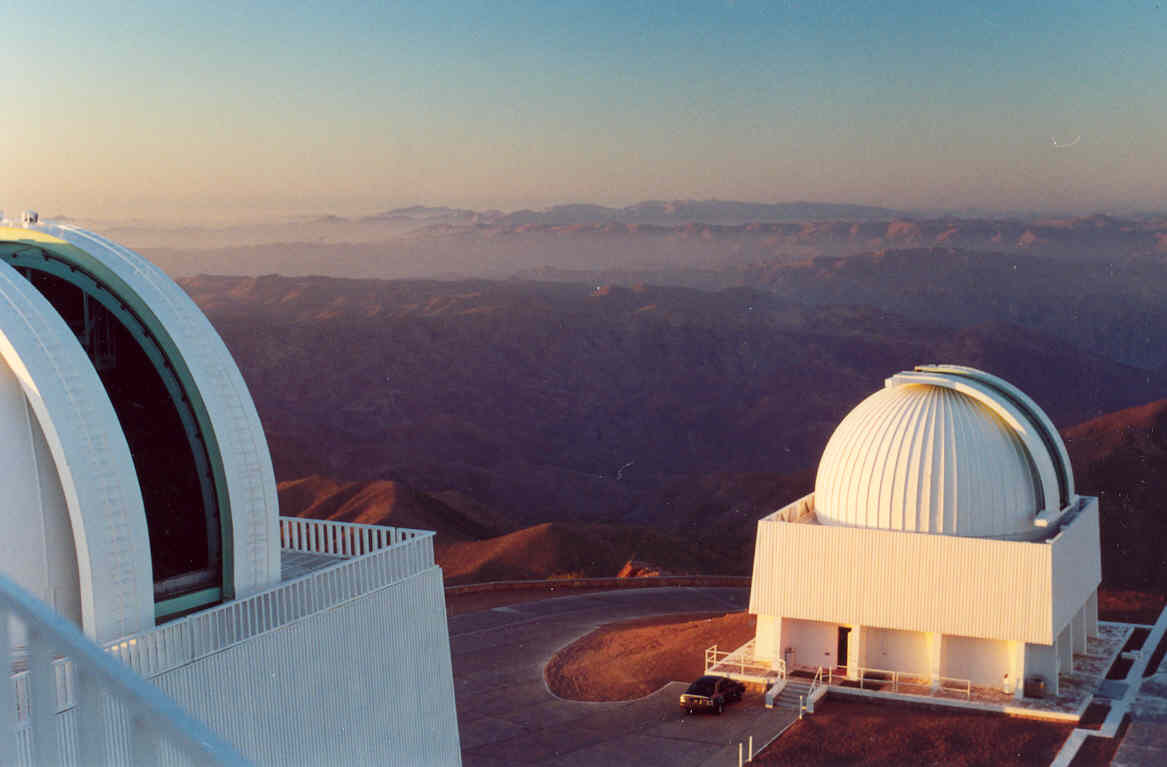 Astronomers are concerned with collecting information, almost
entirely in the form of radiation, from celestial objects.
For astronomers at Cerro Tololo this means visible and
infrared light. But not all the light which arrives at the
mountaintop comes from objects we study. Of course, the Sun
interferes during the day (except for those who study the Sun);
and the full Moon can be very irritating for someone working on
a faint galaxy (though there are also people who study the Moon).
More and more, however, interference comes from man-made sources,
in the form of "light pollution" from surrounding towns and
villages.
Astronomers are concerned with collecting information, almost
entirely in the form of radiation, from celestial objects.
For astronomers at Cerro Tololo this means visible and
infrared light. But not all the light which arrives at the
mountaintop comes from objects we study. Of course, the Sun
interferes during the day (except for those who study the Sun);
and the full Moon can be very irritating for someone working on
a faint galaxy (though there are also people who study the Moon).
More and more, however, interference comes from man-made sources,
in the form of "light pollution" from surrounding towns and
villages.
The following pictures show something of the lights near
Cerro Tololo Interamerican Observatory. They were taken with a
normal 35mm camera and a 135mm telephoto lens (at f/2.8). One image
of each scene shows
essentially what the human eye would see, looking at it.
For the others, a prism was placed in front of the lens. This
breaks down the light from each source into a spectrum, a swath of
colors, from which we can tell more about the sources of the light.
It is important to keep a balance when thinking about light pollution
near Cerro Tololo. Although there is some visible now (as the pictures below
demonstrate), it does not presently interfere with observations
in a major way. It is certain, however, that in the future light pollution will
make the site less useful for astronomy, unless drastic steps are taken.
Happily, actions are being taken. Nearby cities and towns have been very
cooperative and new lighting regulations are coming into force.
What to look for
Some lights give out a continuous range of color, sending some of
their illumination at all wavelengths. Normal incandescent light-bulbs
are of this sort. Others only show specific wavelengths, "lines"
which (among other things) tell what chemical elements are radiating,
leaving intermediate colors dark. And some lights combine the two,
superimposing lines on a continuum. Astronomers prefer, in general,
that lights around them be line-emitters, because if necessary they
can use filters to block out the lines, looking only in between.
Other things being equal, line-emitters are also more efficient at
turning electricity into light than continuum-emitters, thus saving
money; but many people don't care for the color of the light they
emit. So low-pressure sodium vapor lights (which show only lines)
are less popular than high-pressure sodium vapor lights (in which
the lines are so broad they merge into a continuous swath).
To interpret these spectra two things should be kept in mind. First,
these are prism spectra, which stretch out the blue end more than
the red. So the blue end appears fainter, even though there may
in fact be more light coming out there. And some are recorded by
color film, which uses three light-sensitive dyes to mimic the response
of the human eye. This response is never perfect. There is normally
at least a small gap in the spectrum between each dye, so that (for
instance) something shining at a particular color of turquoise might
be registered neither by the blue dye nor the green dye, and so be
missed; I know of one color film which misses the orange
line of sodium (very bright in all sodium lights) entirely, since it
falls between the green and the red dyes. Another has no green-dye
sensitivity there, so what is orange to the eye shows deep red on film.
The response of black-and-white film is much smoother, though of course
it's harder to tell the wavelength of any particular feature.
Click on each image to get a bigger version.
The city of Coquimbo
The picture at left
shows the view from the CTIO offices in La Serena across the
bay toward Coquimbo. Note that all this light (with the exception
of the Millenium Cross in the background) is coming from a lower to
a higher elevation, and so is quite useless for illuminating anything
around the lights themselves. The orange tint of sodium lights can
be picked out as contrasted with the more bluish mercury-vapor or
halogen lights.
Exposure about two seconds, film speed 100 (the same film was
used for all color pictures), 9 June 2003.
In the middle is a spectrum of the same area (pointed just a little to the
left of the other picture). The bright bluish sports
lights around the stadium are mecury-vapor (or halogen),
as shown by several bright
lines in the blue. Most of the lights are high-pressure sodium, with
lines superimposed on a strong continuum. In fact, there is some
low-pressure sodium vapor in each high-pressure sodium light, which
causes a small absorption (dark) band in the orange. The illumination
of the Millenium Cross is identifiable, and appears to be made up of lines
superimposed on a continuum.
Exposure about four seconds, also on 9 June 2003.
At right is a spectrum, on black-and-white film, of the same general area as
seen from the top of Cerro Tololo. It's harder to tell what wavelength a
particular feature has without color information, but the overall response is
flatter, without the dips between color dyes. High-pressure sodium lights
still dominate, and can be identified by the absorption feature. The several
blue lines from the mercury-vapor lights can also be picked out. Exposure
fifteen minutes on Plus-X (speed 125), 10 June 2003.
The town of Vicuña
From the top of Cerro Tololo the brightest man-made lights come
from the nearby town of Vicuña. At left, in this seven-minute exposure on
ISO 100 film they seem to illuminate the entire Elqui Valley. This is in spite of
great efforts to control lighting in the town, and a very high
level of cooperation of town officials with the Observatory.
Note that telescopes will routinely use hour-long exposures with
electronic detectors (much more sensitive than film) in studies of fainter
objects, so this level of nearby light is not trivial. The picture was taken
the night of 10 June 2003.
In the middle, on this thirteen-minute exposure most of the lights appear
to be high-pressure sodium. Also taken on 10 June 2003. If you look closely, you
can see the ring of sodium lights at the lower right, in both green and yellow;
but the patch of lights above them in the left-hand picture is invisible in the
spectrum. This patch must be made up mostly of continuum-lights, spread out so
much by the prism that they don't show at all. They therefore make a contribution
to background light at all colors, though not yet a very big one.
On the right, a black-and-white spectrum. The same features are visible but this
gives a better idea of the true shape of the spectra of the lights. Exposure
twenty minutes on Plus-X, on the same night.
The town and mine at Andacollo
West of Cerro Tololo is the town of Andacollo, also the site of a mine. Throughout
northern Chile, which is relatively sparsely populated but has great mineral
wealth, mines contribute almost as much to overall illumination as all other
activities combined. The mine is to the upper right of the town. Nine-minute
exposure on Plus-X.
This spectrum, like the others, has mostly high-pressure sodium lights. Due to the faintness
of the illumination, sometimes only the emission lines are visible in the blue and green; but the
continuum is clear in the red. Off to the right, however, there is a feature like an upside-down
"7" in which only the emission lines show (in the yellow and green), with no
continuum at all. These are the low-pressure sodium-vapor lights around the mine.
They are clearly much easier to deal with spectroscopically than high-pressure sodium.
This black-and-white spectrum again smooths out the response of the color film. High-pressure
sodium lights are identifiable, as before, through the absorption feauture on the orange
continuum. The extreme blue end of the spectra of the brightest lights looks a little
blurry. This is in the near-ultraviolet, beyond what the eye can see, and camera lenses
are not constructed to focus this light well. Fifteen minute exposure on Plus-X, 10 June 2003.
Return to:
ASR group home page
CTIO home page
Lumínica page
Dr. Whiting's home page
last updated 10 September 2018
 Astronomers are concerned with collecting information, almost
entirely in the form of radiation, from celestial objects.
For astronomers at Cerro Tololo this means visible and
infrared light. But not all the light which arrives at the
mountaintop comes from objects we study. Of course, the Sun
interferes during the day (except for those who study the Sun);
and the full Moon can be very irritating for someone working on
a faint galaxy (though there are also people who study the Moon).
More and more, however, interference comes from man-made sources,
in the form of "light pollution" from surrounding towns and
villages.
Astronomers are concerned with collecting information, almost
entirely in the form of radiation, from celestial objects.
For astronomers at Cerro Tololo this means visible and
infrared light. But not all the light which arrives at the
mountaintop comes from objects we study. Of course, the Sun
interferes during the day (except for those who study the Sun);
and the full Moon can be very irritating for someone working on
a faint galaxy (though there are also people who study the Moon).
More and more, however, interference comes from man-made sources,
in the form of "light pollution" from surrounding towns and
villages.
